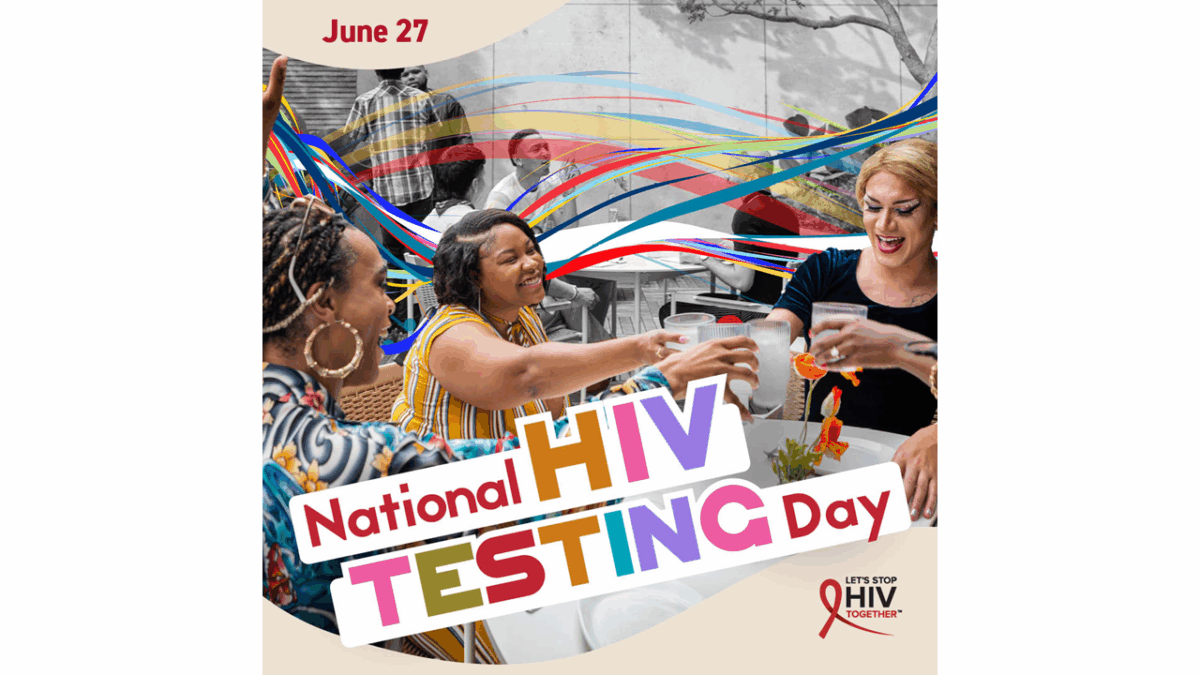All humans share 99.9 percent of our genetic makeup, however those small differences can have a profound impact on many important factors. One of those variables is the way we respond to certain drugs: whether they’re effective at causing the desired outcome or are poorly tolerated.
As experimental therapies progress through the drug development pipeline, clinical investigators become increasingly focused on how the drug performs in larger populations of study participants. By the time a drug is approved, it has ideally been tested on hundreds, or even thousands, of patients
Former FDA Commissioner Dr. Robert Califf dubbed 2016 “The Year of Diversity in Clinical Trials” in a blog post on FDA Voice. However, based on the numbers provided in the regulator’s 2016 Drug Trial Snapshots Report, the pharmaceutical industry has fallen far short of that goal.
Older African-American individuals are twice as likely to suffer from Alzheimer’s disease or dementia, compared to their Caucasian counterparts. African-American women are nearly twice as likely to die of breast cancer. Individuals of Hispanic and Latino descent are at a higher risk of developing diabetes.
Regardless of these statistics, the majority of participants in clinical trials are Caucasian. In fact, African-Americans comprised just seven percent of all clinical trials participants in 2016. Just one percent clinical trial participants are Hispanic. Clearly, members of these communities are at a disadvantage if the new therapies under development are never being assessed in people of their ethnicity.
While several studies have found conflicting results when it comes to women’s participation in clinical research – finding that females are sometimes over-, under-, or adequately represented in trials – differences between the effects of drugs on women and men make equal representation imperative.
Importance of Diversity
So, what’s the true cost of performing clinical research on a primarily white patient population? For patients of other ethnicities, they’re losing the opportunity to try a new, experimental therapy which may be more effective than the current standard of care, and contribute to the greater research community.
What’s more, if the drug is eventually approved by regulators, it may be altogether ineffective in specific patient populations – a finding which could have been uncovered during the clinical trials process if more minorities were included in the study. This could result in a potential loss of revenue for the pharmaceutical company which developed the drug because their eligible patient population would be limited to only those ethnicities who responded to treatment in clinical studies.
“There have been drugs that have gone on the market in the past that haven’t been tested in the Hispanic, Latino or African American populations, and when they get the drug into the broader market to use, it hasn’t been effective in that population,” says Leigh Zisko, senior manager for recruitment and clinical trial optimization for the Global Alzheimer’s Platform Foundation. “We want to make sure that does not happen for Alzheimer’s disease. We want be sure that if they find a drug that works, it works for everybody.”
Zisko points out that clinical trials, by their very nature, need to have a set of exclusionary criteria to ensure that the right participants are being recruited and data can be compared between patients. However, careful consideration must be taken to ensure these criteria do not inadvertently exclude minorities.
“It’s difficult because there are family members that are younger who know that their parents and grandparents have died of Alzheimer’s disease and they want to get into a trial early,” says Zisko. “Unfortunately, most Alzheimer’s disease trials don’t sort allowing people in until you’re about 60 years old. There’s a lot of scientific reasons for that but it makes it a lot harder to analyze data if we’ve got ages all over the place.”
But the benefits of participant diversity aren’t limited to the field of Alzheimer’s research. Dr. David Gerber, medical oncologist with a research focus and clinical expertise in thoracic malignancies from the University of Texas Southwestern Medical Centre, says that our modern understanding of cancer as a disease is highly-dependent on ethnicity, and that therapies will need to be tailored as such.
“I think in the field of oncology we’ve learned a couple of things in recent years: the first is that cancers, the diseases under study may differ considerably according to the population,” says Gerber. Lung cancer may be a different disease among East Asians than it is among Caucasians than it is among African Americans, and more. We’re beginning to understand the molecular underpinnings of these differences but without a complete understanding of the disease, I think it remains essential that we have a demographically-varied and diverse population that we study so we’re representing the full spectrum of disease when we use the term ‘lung cancer.’”
He points out that some cancer therapies show dramatic differences in efficacy when used in different ethnic patient populations, highlighting the need to include participants from diverse backgrounds in clinical development of these drugs.
“We’ve learned through a field known as pharmacogenomics that different people process drugs in different ways and when you process or metabolize drugs in different ways both the efficacy and the toxicity may be different. We need to learn about those variances in our clinical trial,” says Gerber.
Identifying Barriers to Participation
The issues preventing minorities from participating in clinical trials are multifactorial. One of the most common obstacles is a language barrier, a seemingly simple issue with a less-than-straightforward solution.
In Alzheimer’s research in particular, where raters or psychometrists must assess participants’ cognitive ability based on an established test battery, language can be a particularly tricky confounding factor.
“[Participants] don’t always speak English as a first language,” explains Zisko. “It’s very challenging for us to do cognitive testing on somebody that doesn’t speak English as a first language because we might think that they have memory problems when really they don’t.”
While the obvious solution to this problem would be to translate study materials into the participants’ native language and find raters who are fluent in that language to work with the patients, Zisko explains why this is more challenging than it seems.
“Finding a Spanish-speaking rater is very, very challenging. They typically have to have a degree in psychology, quite a few years of experience, and sometimes they’re required to have a master’s,” says Zisko. “They’re very specialized and they’re very hard to find.”
To complicate matters, translating consent forms and other study-related documents into each participant’s preferred language can quickly become cost-prohibitive. Spanish is a relatively common second language for trials conducted in the US, but as soon as investigators must translate materials into other foreign languages, the time and financial costs become burdensome.
Compared to the more concrete issue of the language barrier in clinical trial participation, trust is a more subjective, but highly important, aspect to improving diversity in clinical research. Minorities may be less likely to consider clinical trial participation based on previous injustices perpetrated by the scientific community.
Between 1932 and 1972, the US Public Health Service and the Tuskegee Institute conducted a study of black men infected with syphilis. While the participants were told they were being treated for their illness and consented to medical exams, they were never actually administered adequate treatment for syphilis. According to the Centers for Disease Control and Prevention (CDC), penicillin became the standard of care for treating patients with this sexually-transmitted infection in 1947, however volunteers in the non-infamous Tuskegee Syphilis Study were never offered this treatment.
“That’s one of many things that oftentimes people point to, and that was the beginning of kind of a distrust, or a mistrust, in getting involved with clinical trials,” says Zisko. Since that point, we’ve been working backward trying to regain trust in that community and help them understand the benefits of getting involved in research.”
Individuals from varied backgrounds also face barriers to accessing healthcare services in general, making the prospect of volunteering for a clinical trial even more unrealistic to their situation. According to 2015 statistics, about one in five individuals in the US were enrolled in Medicaid or a related government program. While these programs help patients receive healthcare services from their doctor, they often don’t cover the cost of referrals to specialist physicians who are the ones running clinical trials.
“The system is stacked up against them because most of the clinical trials come from specialty referrals, and the people who are on Medicaid and have no insurance, they don’t really get access to [that],” says Dr. Ram Raju, senior vice president and community health investment officer at Northwell Health, a major health system in the New York Metro area. “These providers are usually high-end doctors who are well-known and their involvement in Medicaid is much less.”
Raju goes on to say that most site visits are scheduled between the hours of 8am and 5pm – a timeframe that excludes individuals with day jobs. To complicate matters, some individuals work two jobs to support themselves and their families and would have to take time off to participate in a clinical trial.
In the uncertain political climate in the US, Raju is also finding that undocumented immigrants are more reluctant than ever to seek out healthcare services. These social determinants of health must be addressed if clinical trial diversity is ever to be improved.
“Now we are finding people who are undocumented are afraid to come into healthcare because they’re worried about what will happen to them if they give that info to you; will that info be used by someone else to deport them? In some ways we are having to face that,” says Raju. “If I help them get access to healthcare I can also help them to enroll in the clinical trials.”
Recruiting Underrepresented Individuals
Breaking down the walls that prevent minorities from engaging in the drug development process is no easy task. But according to Zisko, acknowledging these problems is the first step in addressing them.
“I think it’s a step even just that people are recognizing how much of a barrier this really is and that we’re talking about it more,” says Zisko. “The clinical trial community didn’t used to do that.”
She says that spending time and resources to engage key players in underrepresented communities is important to build relationships built on trust. This is a sentiment mirrored by Raju, whose role is to create a credible connection between the healthcare systems and the communities they serve.
“We’re looking for ‘partners,’ not ‘subjects,’ so we change the conversation,” says Raju. “We want to give them the best possible cutting-edge treatment for their disease. At the same time [we need] to protect their interests. We have to do both, otherwise we would not be able to recruit minorities and women into clinical trials, which is so needed in this country.”
Zisko stresses that neither she, nor anyone else involved in patient recruitment, have all the answers, and that tackling the issue of a lack of diversity in clinical trials is best met head-on through community outreach and education.
“I think if I can emphasize one thing, it’s building trust,” says Zisko. “There’s this misperception that if you participate in a clinical trial, you’re a lab rat, or we just want you to examine you and then we’ll kick you to the curb. That is the fault of our fields.”
In addition to community outreach, organizations like I’m In have been founded to help people understand the importance of diversity in clinical trials, and how they can get involved. Founded by the National Minority Quality Forum and PhRMA, the largest trade organization for the pharmaceutical industry, in 2014, the campaign has partnered with more than 50 organizations to help raise awareness about clinical trial participation.
How well is the clinical trials community addressing the issue of participant diversity? Share your thoughts in the comments section below!











Join or login to leave a comment
JOIN LOGIN